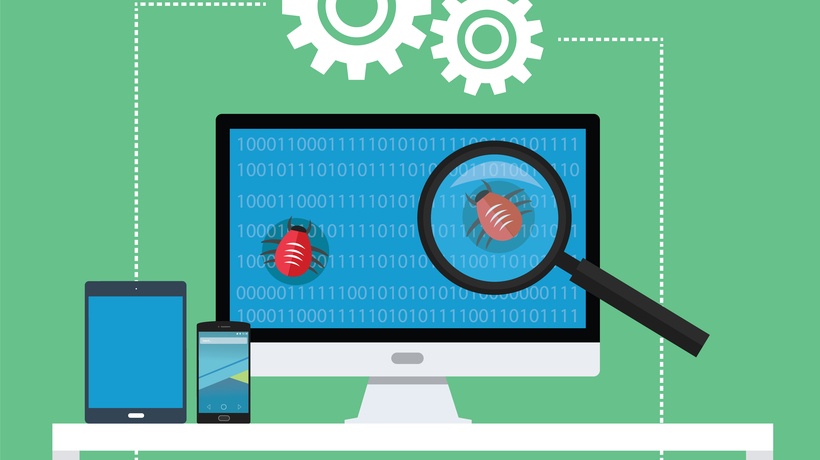eLearning Automation: Everything eLearning Professionals Need To Know
Many eLearning professionals already use eLearning templates and online asset libraries to create cost effective eLearning courses. However, there are a variety of other applications for eLearning automation these days. Complex equations and computer coding allow you to design personalized eLearning experiences and assess online learners' progress. In this article, I'll share 3 key characteristics of eLearning automation and the benefits it can provide. I'll also reveal a crucial question that you should ask before automating your eLearning course.
3 Key Characteristics Of eLearning Automation
1. Uses Algorithms To Generate eLearning Content
eLearning automation is all about algorithms. In this case, the algorithms are a set of computer codes and instructions that controls the eLearning content display. For example, eLearning content that is automatically generated by the system based on the needs of a particular online learner. Essentially, you create a programming code that triggers a certain response on command. You're able to dictate what that command is, such as a test score or performance benchmark. For instance, a particular piece of eLearning content displays when an online learner passes the eLearning assessment. If they don't meet the minimum requirements, the code may generate a resource list they can use to improve.
2. System-Generated eLearning Assessments
Some Learning Management Systems now give you the ability to generate automated eLearning assessments. The LMS accesses the eLearning content that you've already uploaded and uses it to create an online quiz or exam. As a result, you can test learner knowledge and monitor their progress in a fraction of the time.
3. Automatically Adjusts eLearning Content
The algorithms used in eLearning automation also allow you to personalize your eLearning content. As an example, an eLearning assessment reveals that the online learner needs to develop a certain skill. The LMS would automatically adjust the eLearning content, activities, and modules to fill the gap. In other words, their personal learning path would take them to another eLearning course to meet their individual needs. eLearning professionals achieve this by creating tags for specific eLearning content in the LMS. The LMS would then fetch and display the eLearning content based on the pre-defined criteria.
4 Benefits Of eLearning Automation
1. Reduces eLearning Course Development Time
Let's be honest, creating eLearning assessments is a time consuming and tedious process. You have to examine all your eLearning content and then formulate questions that align with the learning objectives. Fortunately, eLearning automation allows you to automatically generate your eLearning assessments. eLearning automation also gives you the opportunity to provide immediate feedback on a larger scale. For example, identifying areas for improvement based on an online learner's test scores and performance.
2. Customizes The eLearning Experience
The most effective eLearning experiences are personal and relevant. They give online learners the chance to pursue their own goals and explore topics that matter to them. For instance, a branching scenario that allows them to brush up on job related skills. eLearning automation customizes the eLearning experience by adjusting the eLearning content. This includes the level of difficulty, eLearning activities, and supplemental recommendations for online resources.
Let's say that an online learner outperforms all of their peers. Their eLearning assessment results show that they know the topic inside-out and they are breezing through the interactive eLearning exercises. As a result, they may not have to participate in the remainder of the eLearning course, because they already know the subject matter. The system would automatically redirect them to the next eLearning course or provide them with additional resources. This prevents boredom and frustration, which improves learners' engagement and allows them to excel.
3. Increases Online Learner Motivation
eLearning personalization and eLearning course customization lead to an increase in motivation. Online learners know that they are getting the specific skills and knowledge they need. As such, they are more likely to participate in the eLearning process. You can even automate eLearning to cater to an online learner's interests and preferences. For instance, the research you conducted before the eLearning course reveals that some online learners enjoy tactile eLearning activities. The system automatically presents them with a serious game instead of an online lecture or presentation.
4. Improves ROI
Improved motivation, eLearning personalization, and reduced eLearning development time all equate to one thing; positive ROI. Corporate learners get the online training they require to do their job. The system presents them with online training activities, multimedia, and online training content that is engaging and relatable. As a result, employees get more benefit from your online training program. Not to mention, you devote fewer resources to L&D and you are able to produce online training courses more rapidly. This is ideal for online training initiatives that must be updated on a consistent basis. For example, product knowledge or company policy online training courses.
Is eLearning Automation Right for You?
There isn't a simple and straightforward answer to this question. Ultimately, it all depends on the nature of the eLearning content, the learning objectives, and your online learners' needs. For example, eLearning automation can be used to create quick eLearning assessments or reveal the correct answer at the end of a quiz. However, you should always pair it with personalized eLearning feedback for more involved subject matter.
Think of eLearning automation as a robot who can help you with rudimentary tasks around the house. They make your life easier in many respects, but aren't the best for emotional support. You wouldn't trust them to wash the dishes and leave relationship advice to your confidants. Likewise, you cannot rely on eLearning automation to provide one-on-one guidance to your audience. It’s a "behind the scenes" process that makes your work life easier, but there is still the need for human interaction.
eLearning automation may not be the best solution for every eLearning course. However, it is an ideal approach for qualitative eLearning assessments and more basic eLearning content. And who knows what the future will bring for eLearning automation? Decades from now complex codes and algorithms may bear the brunt of the work.
eLearning automation is just one of the eLearning trends that we highlighted in our annual guide. Read the article Top 6 eLearning Trends For 2016 to discover some of the top eLearning trends so that you can keep up to date with the latest and greatest in eLearning.









